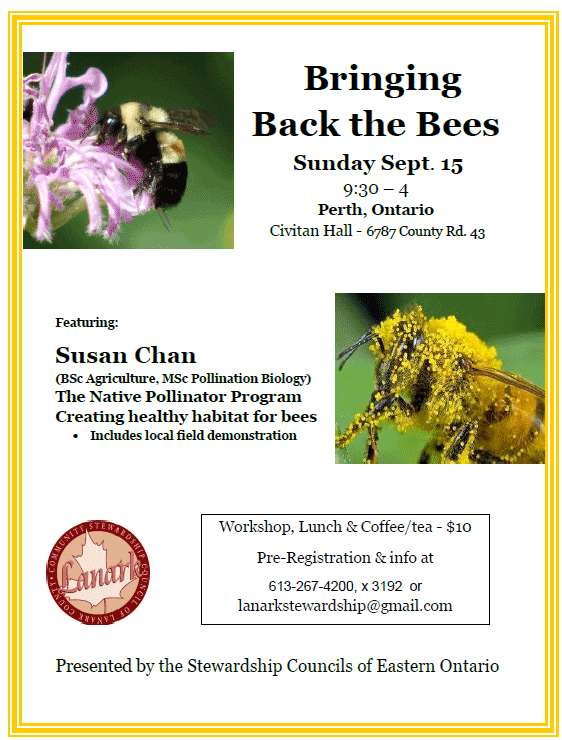We Have To Act Now!
The Xerces Society for Invertebrates
Surprisingly, there are very few nonprofits/ organizations dedicated to saving the Rusty-Patched Bumble Bee other than the Xerces Society for Invertebrate. The Xerces Society for Invertebrate is a nonprofit organization dedicated to protecting wildlife through the conservation of invertebrates such as the Rusty-Patched Bumble Bee and their habitat. The organization has been protecting invertebrates worldwide for almost forty years now implementing conservation groups for various species in need of our help. It is one of the only non-profits that is trying to put the Rusty-Patched Bumble Bee on the Endangered Species list. Although they are the only non-profit that is supporting the species, the Rusty-Patched Bumble Bee is more than lucky to be in the hands of these wildlife lovers (Xerces Society For Invertebrate Conservation, 2001).
Our Government Refuses to Call Them Endangered!!!
In response to the rapid decline of the species, the Xerces Society for Invertebrate Conservation petitioned the U.S. Fish and Wildlife Service to put the Rusty-Patched Bumble Bee on the endangered species list in 2013 (The Rusty-Patched Bumble Bee, 2001). The group followed up with a lawsuit after no action was taken in 2014 and in September of 2015, the FWS finally agreed that species MAY merit protection. In order to consider the bee for the list, the FWS first must conduct a 12 month review of the bee species to determine if putting it under the Endangered Species Act is warranted or not (“Xerces Society For Invertebrate Conservation”, 2001).
There are no other bee or bumble bee species listed under the Endangered Species Act currently. The Republican party refuses to accept any form of bee species onto the list even when honey bees pollinate a third of the world’s food supply. In fact, according to the Motherboard, Republican members of Congress have been attempting to dismantle the Endangered Species Act through multiple legislative proposals. They claim that the ESA has been repeatedly “abused” and is no longer an efficient way to protect our vulnerable animal species and is a complete waste our money when in reality the destruction of the ESA would result in thousands of species being put even more at risk (“Xerces Society For Invertebrate Conservation”, 2001).
What About Other Countries?
Although the United States has not been able to come to their senses yet, Canada has already enlisted the Rusty-Patched Bumble Bee onto their endangered species list. In Canada, the species has been on the brink of extinction for many years now throughout its large range. Only three individuals have been found in the last 10 years in Canada, and despite three years of searching for the Rusty-Patched Bumble Bee across historic sites in Ontario, the bee has not been located (Ptácek, 2001).
Failure to protect the Rusty-Patched Bumble Bee could result in humans having to self pollinate their own crops such as some parts of China and Japan who were forced to do so after overuse of pesticides destroyed their bee population (Colla, 2010). This is an extremely time-consuming and expensive job that is completely avoidable if we only took simple actions into saving our bee species.
Is Anyone Else Helping The Rusty-Patched Bumble Bee?
Many researchers, beekeepers and farmers are still searching for ways to protect bee species and other pollinator species in order to sustain their populations. They are taking several steps, some which involve applying the precautionary principle.
Sadly, not many actions are taking place to save the Rusty-Patched Bumble Bee except for the Xerces Society for Invertebrate, which is overwhelming disappointing. Losing another bee species could be catastrophic for other bee species. Will losing another bee species alarm people of the various bee species that are in rapid decline? Or will they just forget about that species of bee as well? it is truly terrifying to imagine a world without bees, do we really need to have the extinction of the Rusty-Patched Bumble Bee be our wake up call to action? Or can we begin now?
Speaking broadly within bee species, there are very few zoos that take in bee species, but there are many beekeepers that have began to breed bees that are not as vulnerable to harmful parasites such as mites and also harmful fungi. They are also improving nutrition for bees that are transported from place to place, for example, by not feeding their bees sugar syrups or pollen substitutes. Some farmers raise their own honeybee colonies to avoid having to bring in unhealthy honeybees for pollination (Colla, 2010).










